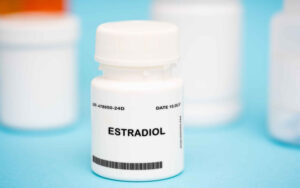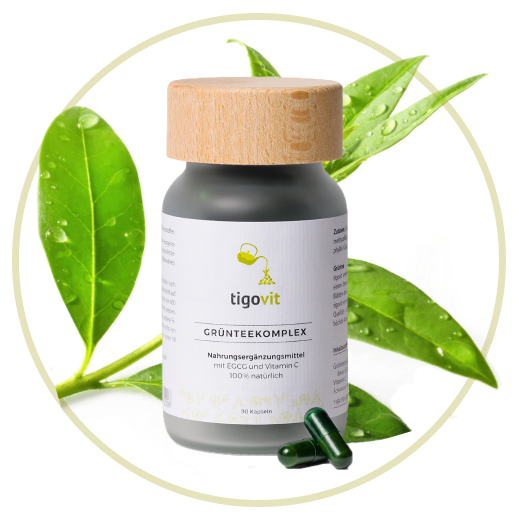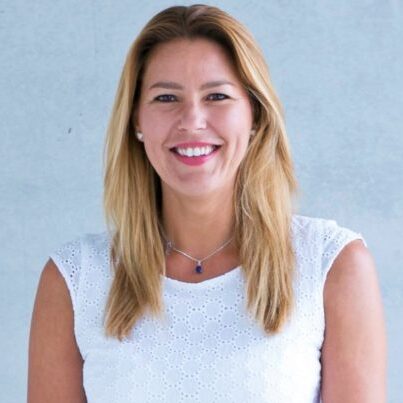Interview with Katharina Maria Burkhardt
The hormone expert Katharina Burkhardt has been a coach, supervisor, hormone researcher, teacher and author for over 20 years. Her fascination is with hormones and the connections between lifestyle and biochemistry. According to her colleague, she is the heart and brain of the Bioidentical Hormones Network, which she founded jointly with a pharmacist, a gynaecologist and a general practitioner in October 2021. The platform is very popular and builds bridges between therapists, patients and experts to share all the valuable knowledge about hormones. It provides guidance for doctors on bioidentical hormone therapy in practice as well as information for interested parties and patients to help them find their way through the jungle of different offers and forms of therapy. The demand is immense and the trend is growing. On the one hand, more and more publications have been appearing for some years and on the other hand, there is now a real trend that is making waves from the USA, among other places.
Difference between synthetic hormones and bioidentical hormones
The word "bioident" is somewhat misleading for some. Many think of "biological", for example soy or yams. In fact, however, only the basic building blocks are extracted from plants in order to then produce hormones from these molecular structures. Diosgenin, which is also present in yams, is the basic structure for the production of all hormones.
Bioidentical, bioidentical, nature-identical or also human-identical means that the structural formula of the respective hormone (gel, cream, suppository) is exactly identical to the structure of the hormones in the human body.
A synthetic hormone, on the other hand, is not exactly identical to the bodily hormones. It has "little feet" or appendages on the chemical structural formulae that can partially block a different effect at the corresponding receptors to which the hormones dock. Of course, this is also partly desired, for example in hormonal contraception with the birth control pill. Bioidentical hormones are not intended to block and occupy. Bioidentical hormones should unfold their natural effect at the receptor. "As a matter of principle, we do not work with synthetic hormones in our network, unless gynaecologists use them for contraception. Bioidentical hormone therapy excludes synthetic hormones."
For which indications is bioidentical hormone therapy suitable?
According to Katharina Burkhardt, there are no complaints for which hormones are not used. The use of hormones in therapy is by no means limited to the climacteric, the Menopauseor PMS. Bioidentical hormone therapy has immense potential in numerous areas of application. Logical. Hormones affect the mood, have psychological and emotional effects and they have an influence on the mental state. Hormones can be used for physical complaints such as osteoporosis, migraine, joint complaints and even depressive moods. It is possible to think beyond the classic hot flushes of the menopause. "There is nothing we can't support with hormones."
What is the dosage form?
 There are creams, gels, suppositories, capsules and tablets for progesterone and estradiol. It is important to find out in advance what is the best form for individual use. Pharmacists know best, as this is a matter of galenics. This means that certain active substances work better or worse in a certain form.
There are creams, gels, suppositories, capsules and tablets for progesterone and estradiol. It is important to find out in advance what is the best form for individual use. Pharmacists know best, as this is a matter of galenics. This means that certain active substances work better or worse in a certain form.
Transdermal:
- About the skin: In transdermal hormone therapy, the hormones are applied as a gel or cream to the skin, e.g. forearm. The absorption takes place via the transporters in the skin into the bloodstream.
- Vaginal or rectal: These are suppositories containing the hormone in question. For example, if a woman has heavy bleeding or vaginal discharge, a vaginal dosage form is disadvantageous compared to a rectal form.
- Sublingual: The active ingredient is placed under the tongue and absorbed through the oral mucosa.
- Bukal: Lozange placed in the cheek pocket where the active ingredient is released into the cheek skin.
Oral:
Absorption of the active ingredient as a capsule or tablet.
Is there a preferred dosage form?
It depends on what is intended. Transdermal application has the advantage that it bypasses the first-pass effect and thus the route via the liver. Transdermally absorbed hormones are therefore gentle on the liver. The active substances then usually arrive at the site of action in the way they are needed. In addition to the route via the liver, a disadvantage of oral intake can also be a loss of active substance of up to 90% in some cases. However, progesterone capsules, i.e. taken orally, also have sensational successes with sleep disorders if they are taken in the evening before going to bed. A progesterone cream cannot compete with this."On the one hand, there is a best form for the symptoms, and on the other hand, this form must also be practicable and pleasant. Not every person likes creams, for example, because they are usually slow to absorb." So it is always important to consider compliance. How can the patient implement the intake in everyday life and what does she prefer? Creams, for example, are slow to absorb, which is why many prefer a gel. Hormone therapy is very individual and complex. "The nice thing is that we can also respond to that because we have an incredible number of options", says the hormone expert.
Myomas - Is bioidentical hormone therapy the right thing to do?
In many cases - not always - the use of progesterone has proven successful, according to the hormone expert. Often the fibroid grows a little and then recedes. Of course, the growth at the beginning scares many women. It is important to do this together with a gynaecologist who knows what she is doing. It is important that this is accompanied by imaging procedures. Progesterone is not always the right method for fibroids. There are other ways. "For example, we also observe a very positive effect with the use of certain plant extracts, which have an excellent study record." says Katharina Burkhardt. "Bioidente hormone therapy is not just therapy with hormones."
Bioidente hormone therapy consists not only of hormones
The hormone specialist emphasises that in addition to the hormones themselves, it is essential to supply the important co-factors and micronutrients. Plants are also needed for this, as it is a holistic approach. "It may sound extreme, but we are only doing symptom therapy when we treat exclusively with hormones." It merely replaces a substance that is not there and fills it up. However, the question of why it is not there is not answered.
Cofactors, micronutrients, plant substances
There can be many reasons for hormone deficiency. There may be a lack of cofactors to produce the hormones. There may be an enzyme deficiency, the body may want to detoxify, there may be an underlying imbalance in the gut microbiome, or there may be a need for plant compounds to bring the body back into general balance.
50% Personal Responsibility & Health Literacy
Our experience for 20 years: Lifestyle is actually 50% of the whole thing. First and foremost, it is about the patient's personal responsibility and health literacy. We want to convince and motivate women to adopt these basic themes in their lives. A few basics should be clear. Red meat five times a week, sugar, nicotine and caffeine are known to have harmful effects on general health, including hormones. In addition, a healthy rhythm is important, exercise and sport.
Drawing strength from cyclical life
Adopting the rhythm of the cycle in your life is an important part of hormone therapy. Not every day is the same. The days around ovulation or during bleeding require a different attention to one's body. Many observe that they experience fewer PMS symptoms or mood lows when they give in to fatigue, and don't put on extra gas.
Increase adaptation to stress & reduce inflammation
Anti-inflammation is important in all walks of life. Any plant that can do this is welcome. On the website of the Network for Bioidentical Hormones, the experts have compiled an overview in the download area that lists all suitable plant substances and foods. So if there is a slight estradiol deficiency, it is possible to see which foods promote the production of estradiol through the phytoestrogens they contain. In this way, women can already take a big step through conscious nutrition.
The most important thing: Integrate & live your own rhythm

Shift work, going to bed late, eating a lot, eating late, sometimes not eating at all - especially eating habits - have extreme effects on hormone balance, according to the expert. She gives us another well-intentioned piece of advice. "Of course, we can't always eat at 12 o'clock and 6 o'clock sharp, or even avoid stress completely. It's a lot about that, To live one's own rhythm and also to consciously take time out again and again, to allow oneself breaks and to look at what really nourishes one's own system. Pausing and noticing what does me good - that's what really matters! Whether that's yoga or meditation is ultimately not important," she advises. "Just do nothing for a change."
Chronobiology of hormones
Like everything in nature, hormones are also subject to diurnal fluctuations as well as a monthly rhythm. "Therefore, it is important that we neither go full throttle all day nor lie on the sofa all day. Balance and rhythm are the key - as nature teaches us."Therapies should therefore distance themselves from the classic "take xy once a day". Rather, it is important to recognise an individual rhythm and how it looks today in one's own body and psyche. Questions like: Is the sun shining today? Am I on holiday? Am I under stress? Have I been doing competitive sports? What does my next week look like - can I already do something preventively? Of course, this does not apply to people with acute problems, where it is useful and important.
Integrative, individual, holistic
Even if women do not want to have anything to do with hormones, the experts can achieve great success by administering special micronutrients. Vitamin D3 of course plays a major role as a prohormone and a measurement of the vitamin D level is always included in the therapy. A research group at the University of Graz has found out that vitamin D3 stimulates the production of testosterone. In the case of a testosterone deficiency, it is not necessary to immediately administer the hormone; it may be sufficient to measure the vitamin D level and eliminate the deficiency by administering vitamin D3.
Who is the Bioidentical Hormones Network for?
It is for everyone: laywomen, doctors, therapists, companies, scientists, whoever is interested. The information on our website is free for all to download. "We want to increase knowledge and enrich each other. I have nothing to gain from sitting alone on my treasure."



